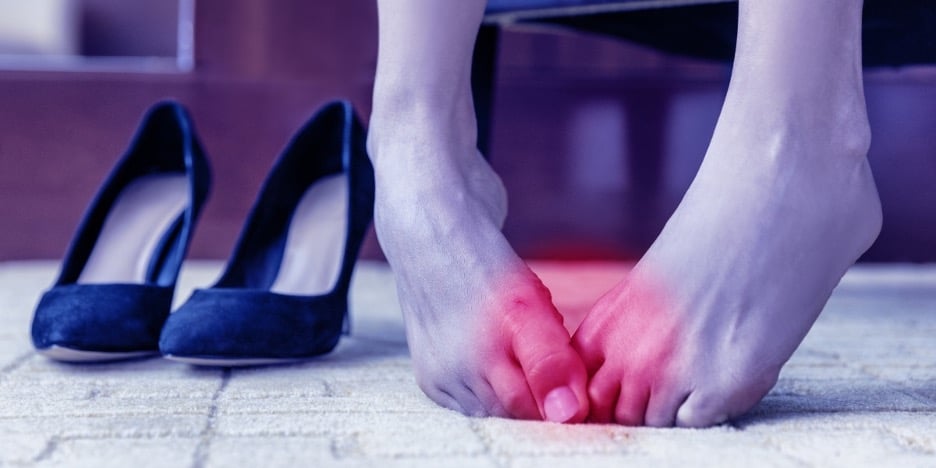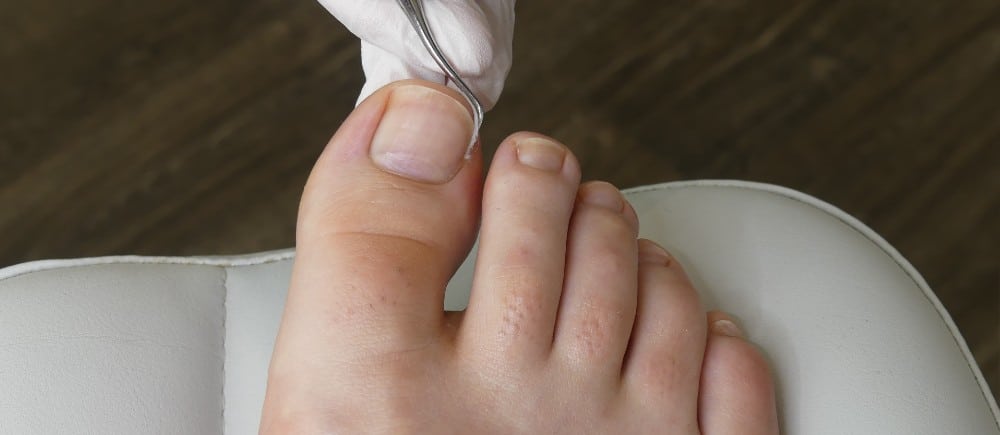Ingrown Toenails
Ingrown toenails are the result of nails cutting into the surrounding skin along the corner or edge of the toes. Pain caused by this condition can range from moderate to severe, and the toe may also become quite tender.
If left untreated, an infection can easily develop. Redness and drainage are signs that may indicate your ingrown toenail has become infected.
If this is the case, then don’t wait to get treatment! The infection can worsen, and potentially lead to loss of the toe.
The good news is that removing an ingrown toenail can be performed with minimal pain. Whether this is your first or hundredth, we can help take care of your problem. So, never attempt to cut out an ingrown toenail on your own— “bathroom surgery” is very painful and often leads to a serious infection.
Common Causes and How to Prevent Them
Some of the most common causes of ingrown toenails include:
- Cutting your nails too short or in a curved line. The skin can fold over the nail, or the nail may begin growing back into the skin. Try not to be overzealous with your trimming and always remember to cut them straight across rather than in a curved line.
- Injuring your toes or nails. Trauma in general can cause ingrown toenails, from stubbing or jamming to repeated pressure like running and playing soccer. During these instances, your toes are often warm, moist and encapsulated in a bacteria-rich environment, increasing your chances of infection.
- Wearing shoes and socks that are too tight, too small, or too short. This may force your toenails into one or both sides of the skin, increasing chances of infection. This is especially true when it comes to teenagers who constantly and quickly outgrow their footwear.
- For some people, ingrown toenails can be hereditary. If your toes are too small in comparison to your nails, or if your nails are naturally curved and/or thick, you may suffer from reoccurring ingrown toenails.
Home Remedies
If you are aware of the root causes of your ingrown toenails and consistently take preventative steps, you can significantly improve your odds of preventing ingrown toenails in the first place. Below are some things to keep in mind if do you ever happen to develop an ingrown toenail:
- Let the situation take its course. If there is no sign of serious infection (swelling, pain, oozing, or foul odor) and you do not have diabetes, then your best option may be to just let the toenail grow naturally. Keep in mind, of course, to not constrict the area and to allow plenty of “breathing room” – opt for open toe shoes and loose fitted socks.
- Soak your feet in warm salt water. A mild soap detergent can also work just as well as salt. Just submerge your feet in the solution for a few minutes. Once done, thoroughly pat the area dry with a clean towel, apply antibiotic ointment and cover the toe with a bandage. Again, refrain from constricting the area and leave plenty of room for your toes to move.
- Never attempt doing bathroom surgery on your own toenail. Always come see the professionals, as there is a high risk of infection.
Usually, if there is excessive swelling, pain or discharge, the toenail is most likely infected and should be examined by a podiatrist. You should never ignore symptoms of infection – when left untreated, an infected ingrown toe nail can spread and result in serious damage, especially if you have diabetes or suffer with vascular disease.
Doctor Remedies
Even when home remedies don’t necessarily seem to work, most visits to our office regarding ingrown toenails are quick, easy, and fairly painless. So, if you suffer from chronic ingrown toenails, there is no need to panic! We have some great in-office treatments to help you get back on your feet in no time.
Some of the treatment options we have available are:
- Slightly raising the nail. Your nail will be separated from the overlapping skin and is then able to grow above the edge of the skin rather than underneath.
- Removing part of the nail. Under local anesthetic, we will remove the part of your nail that is causing the problem.
- Removing both nail and skin (nail bed). This procedure is done when the condition is more severe or frequently recurring and is used to prevent the problematic toenail from growing back.
- Topical medications and antibiotics. These may also be recommended if determined that your toenail is, indeed, infected or has potential of becoming infected.
Contact Us
So, if you ever have any questions or need expert foot care from ingrown toenails to sports injuries, come visit our medical professionals here at our Waco Foot & Ankle office. All you have to do is call us at (254) 776-6995 and get the help you need today!
You can also fill out our request form online and one of our staff members will contact you as soon as possible.


